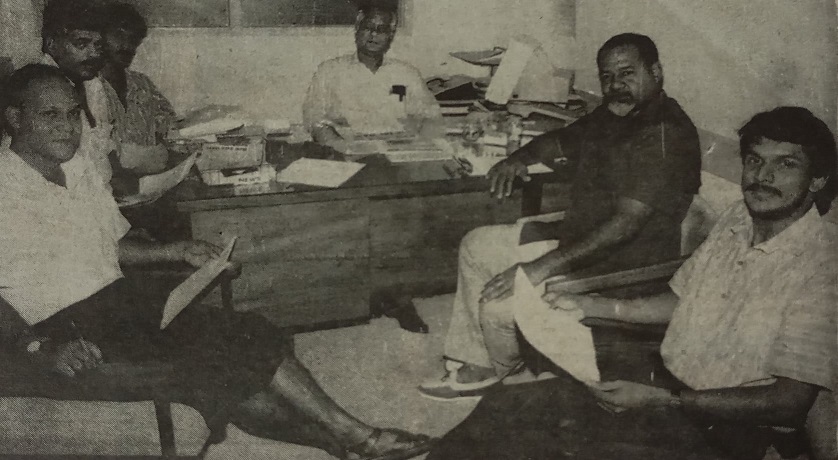The Fiji Times editor, Vijendra Kumar, retired after 22 years of service to the newspaper, 15 as the first local editor, according to an article published by The Fiji Times on July 31, 1991.
The Fiji Times managing director Geoffrey Hussey announced on July 30 that Mosese Velia was to act as editor until the appointment of a new editor was announced.
Velia was the assistant editor with The Fiji Times at the time.
Kumar, 55, was to leave Fiji on August 1 to join his family in Brisbane, Australia, where he intended to spend his retirement.
Paying tribute to Kumar’s service with The Fiji Times, Mr Hussey said: “He has made an exceptional contribution to the growth and quality of the newspaper over many years.
“He will be missed by the company’s management and by all his colleagues. We wish him and his family well in their future in Australia.”
Kumar joined The Fiji Times in 1969 as a reporter at its Lautoka bureau that covered the Western Division and was the first Indian to join.
He rose to become the Western Division bureau manager and was later transferred to Suva.
He was appointed The Fiji Times‘ first local editor in 1975 when he was 39 years old.
In his 15 years as editor, Kumar turned The Fiji Times around from a rather staid, old-fashioned, overseas-oriented paper catering largely to expatriate tastes with a circulation of about 14,000 to what it was in 1991 — a colourful and dynamic daily — catering largely to the local readership.
As he departed on this day, he had the satisfaction of leaving the newspaper at its highest circulation ever.
Daily sales had peaked at about 31,000 and Saturday sales with the weekend magazine section had reached a record 37,300.
Kumar also left behind a highly modernised, computerised production system.
“It’s one of the greatest advances the company has made and has been achieved largely through the efforts of (its present) managing director, Geoffrey Hussey,” he said.
“We are now able to produce the entire paper through computers with both writing and designing done on the screen. Gone are the days of the typewriter and pieces of paper.”
The conversion to modern electronic systems and the modernisation of company premises were achieved at a cost of $2 million.
Kumar said his greatest challenge as editor was to meet the fierce competition provided by a newly-established daily — the Fiji Sun — “a bright young newspaper which made a great impact at the time”.
From 1976, publisher Dallas Swinstead and Kumar worked hard together to make The Fiji Times a more attractive paper with greater appeal.
“The new look and format worked and the paper’s circulation began climbing, reaching over the 20,000 mark after a couple of years,” he said.
Kumar steered the paper through some difficult times, the most recent being the period just after and between the two coups.
“Our overriding concern was to keep the people informed of what was happening in the country.
“We were on edge all the time not knowing what in the paper would annoy or upset the people in government, in the military or other forces at work.
“The only way to handle the situation was to keep your cool and I learnt this under very trying conditions.”
Kumar’s journalistic career began in 1954 with the Pacific Review, a bi-weekly newspaper published in Nadi by a locally-owned company.
Since 1988, he had put out the paper almost single-handedly, reported, proofreading, editing and laying it out.
He then spent a 12-year-stint as a schoolteacher where he helped Dr Shaukat Ali Sahib pioneer the setting up of Tilak High School in Lautoka before he joined The Fiji Times.



